How Clothes, Colors, And Safety Pins Can Convey Significant Messages
Fashion is more than just a way to regulate body temperature and express yourself – it’s also a way to affect change. History is filled with examples of people dressing in a particular way to spread a particular message. Sometimes that message is social, other times it’s political or medical. Whatever the message may be, the messengers use fashion to ensure that it goes far and wide.
The fashion statements that lead to change have come in many forms over the years. However, in this post, we’ll (mostly) focus on two: the colored ribbon and the safety pin. Although they might seem innocuous at first glance, these humble little accessories have had a massive impact on raising awareness around important issues like breast cancer, physical abuse, HIV/AIDS, and more.
The Importance of Clothes in Social Movements
Fashion is not only a way to look good – it can also be a powerful form of collective action and activism. For example, the women’s movement of the early 20th century used fashion in their struggle to gain voting rights.

Source: Twitter
As you can see from the image above, suffragettes dressed all in white to raise awareness about women’s inability to vote. In a similar vein, some feminists in the 1970s burned their bras to challenge social norms of how they should dress and behave.
History of Fashion Activism
Although some might see “fashion activism” as superficial, it has a long and important history. When interviewed by the style website The Zoe Report, the fashion historian Einav Rabinovitch-Fox said, “Fashion was and is always political because it is a material way to express power.”
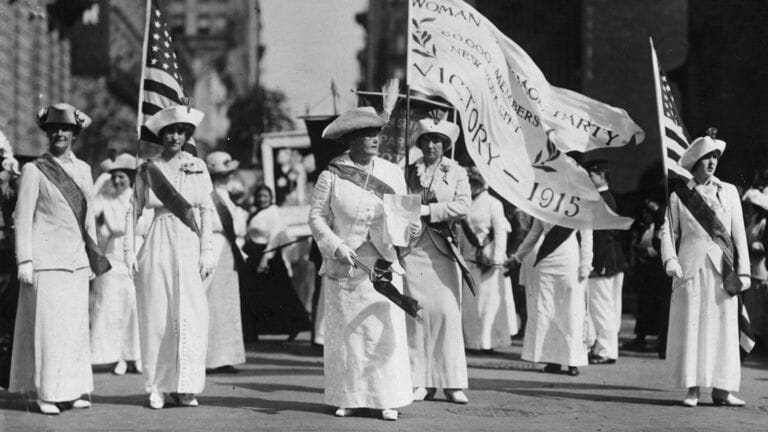
Source: Twitter
Rabinovitch-Fox traces this back to the 1850s when women would wear Bloomers – light airy trousers – as they pursued their social and political goals. The name itself comes from the women’s rights activist Amelia Bloomer.
20th Century Suffragettes
In the early 20th century, suffragettes who were fighting for women’s right to vote wore particular uniforms that made them instantly recognizable. This helped to spread awareness about their concerns and represents an important melding of fashion and political goals.
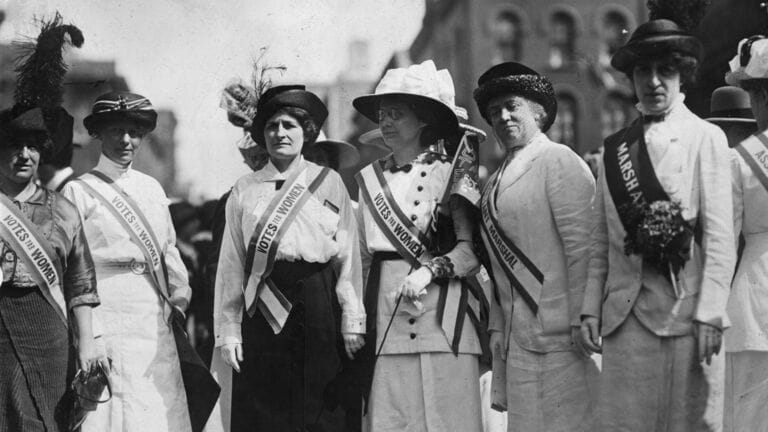
Source: Twitter
Kara McLeod, a fashion historian at California’s Fashion Institute of Design & Merchandising (FIDM), explained the significance of the suffragettes’ color scheme to The Zoe Report. She said that the colors meant “white for purity, purple for dignity and loyalty, and green for hope.”
Color Scheme of the Suffragettes
In the same interview with the style website The Zoe Report, McLeod expanded upon the importance of the suffragette uniform and where it came from. She traced the origins of the white, purple, and green color scheme to 1908.
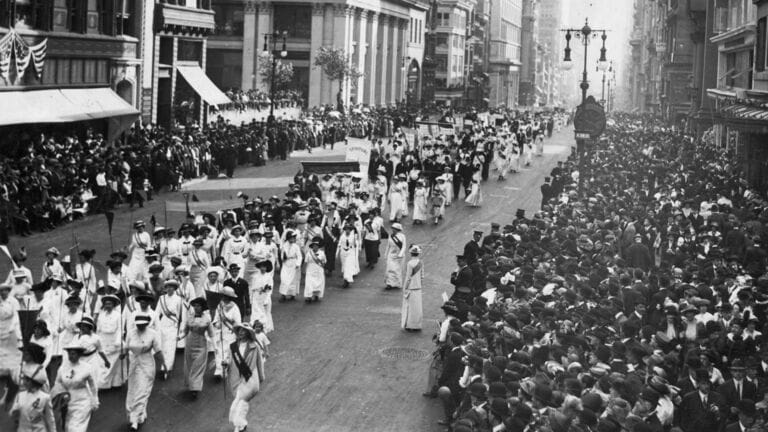
Source: ianbassin/Twitter
During that time, a co-editor for the British publication Votes for Women suggested the unique color scheme. Soon, the design was accepted, adopted, and popularized – other magazines took it up as well, and the suffragette movement became associated with a distinct style.
Aligning with the Feminist Cause
The white, purple, and green color scheme that originated in the 1908 edition of Votes for Women soon spread far beyond the core group of dedicated activists. Soon, other women were wearing ribbons, jewelry, hats, and scarves in the same color scheme.
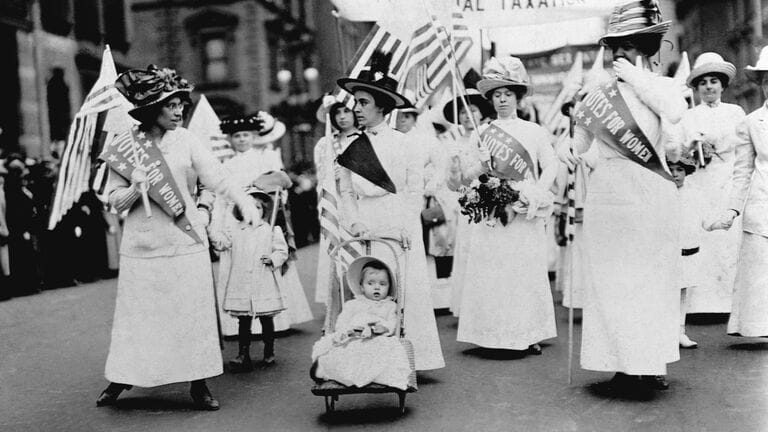
Source: samantha_j_rea/Twitter
As that fashion spread and more women joined the cause, the issue of women’s voting rights gained more attention. As it spread across the Atlantic, the color schemes changed a bit. Whereas most British women liked green, most American women went for golden yellow.
Suffragette Colors Carry On
Not only did the suffragette decision to wear white influence politics in the early 20th century, but it also influenced politics in the early 21st century! Some colors are just too impactful to throw away – and there are still a lot of issues to solve.

Source: Tumblr
For this reason, many modern-day feminists show continuity with the early suffragettes by wearing white. For example, in 2017, women of the House Democratic Women’s Working Group wore white “as a group gesture signifying support for women’s rights,” writes Kara McLeod.
Role of Jeans
Many people have used clothing as a way to raise awareness about social issues. For example, the widespread popularity of jeans is often attributed to student activists during the 1960s. When spreading the word about civil rights in rural areas, it didn’t make sense to wear fancy clothes – so they opted for jeans.
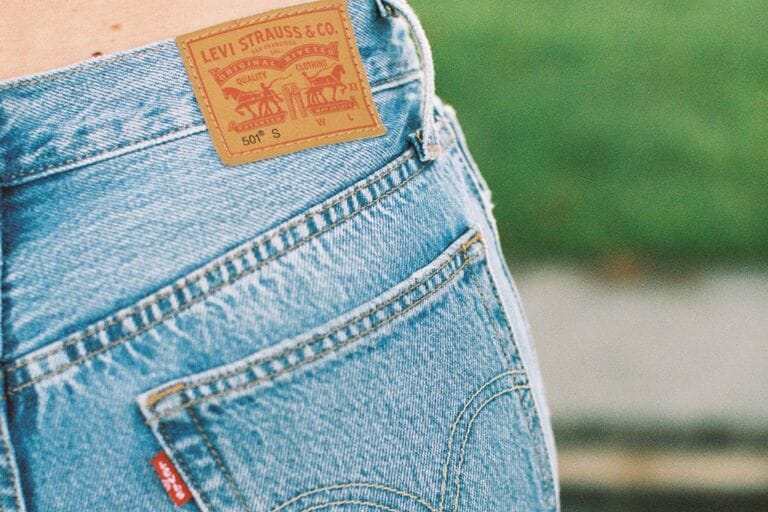
Source: Unsplash
This was partly a practical choice and partly a way to show solidarity with black laborers and blue-collar workers all over the country. That solidarity grew into trust and, eventually, real social change.
The Black Panthers
In 1966, Huey Newton and Bobby Seale founded the Black Panthers in Oakland, California. Alongside their struggle against racism and police brutality, they also created social programs to address food insecurity and medical issues.
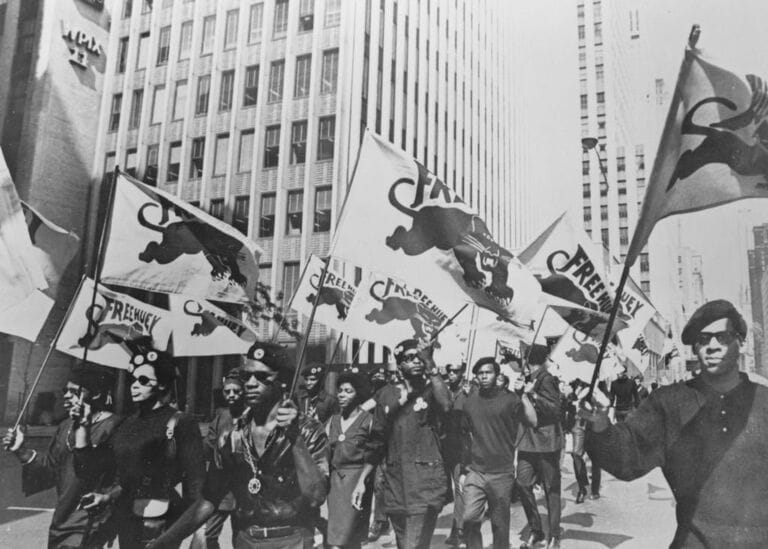
Source: a/JF3Tz/Imgur
As their influence spread, so did their look. Members of the Black Panthers were well known for wearing black berets, black leather jackets, blue shirts, black pants, and black shoes. A lot of members also wore sunglasses and black gloves. This look made them stand out and helped in spreading their message.
LGBTQ Colors
Other groups fighting for social justice choose to go for a more colorful design. Take, for example, the LGBTQ movement. In 1978, the artist Gilbert Baker designed the first rainbow flag, and it was made with the help of an artist collective in San Francisco.

Source: Getty Images
Although the original design had eight colors, later designs narrowed it down to six. In both designs, however, the colors stood for specific qualities. Red was for life, orange for healing, yellow for sunlight, green for nature, blue for harmony, and purple for spirit.
Portable Statements
Rainbow flags are particularly good for marches, demonstrations, and flagpoles. However, they can be cumbersome to carry around in day-to-day life, so a lot of movements have found easier and more portable ways for people to show what they stand for.
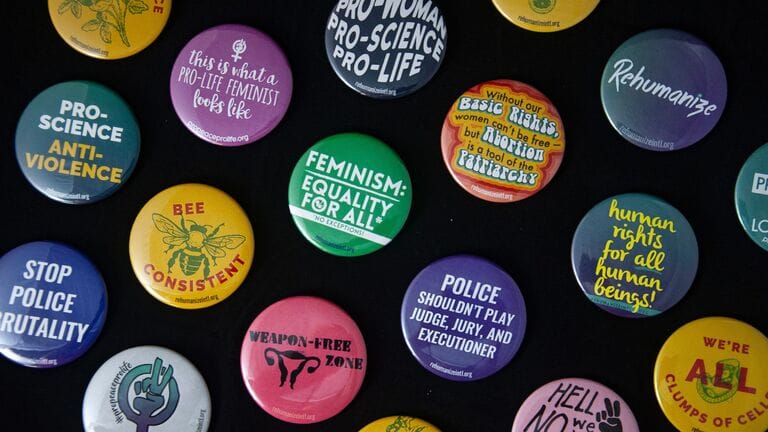
Source: Unsplash
For example, accessories. Everything from wristbands to ribbons to badges can be a way to express your beliefs. As you can see from the picture above, the variety of statements that can be shown on badges is incredible. This can help spread the word on important issues.
Pink for Breast Cancer
The colored ribbon is one of the most popular ways of showing support for a cause through fashion. One of the most famous of these colored ribbons is the pink one feature below – it stands for breast cancer awareness.
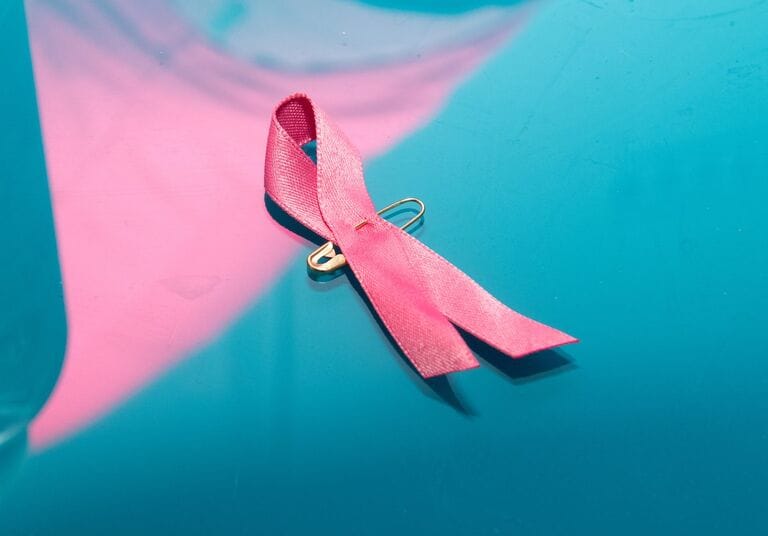
Source: Getty Images
Fastening one of these pink ribbons to a shirt, jacket, or dress can help spread awareness about the problem of breast cancer. Alongside that, the pink ribbon can show that you have emotional solidarity with those suffering from breast cancer.
The Brown Ribbon Campaign
Another example of using a colored ribbon to spread awareness about an issue is the Brown Ribbon Campaign. In 2016, the actor and producer Eva Longoria asked fellow celebrities to wear a brown ribbon to the Oscars.

Source: Getty Images
The point of the brown ribbon was to spread awareness about the plight of Latino people in the film industry. All too often, Latin American actors and actresses get pigeonholed into stereotyped roles that don’t allow them to truly shine. Longoria wanted to expand those possibilities.
Red Ribbons for HIV/AIDS
Alongside the pink ribbon for breast cancer and the brown ribbon for the Latino entertainment community, there is a red ribbon to show support and empathy for HIV/AIDS sufferers. The ribbon dates back to 1991 when the Visual AIDS Artists’ Caucus designed it.
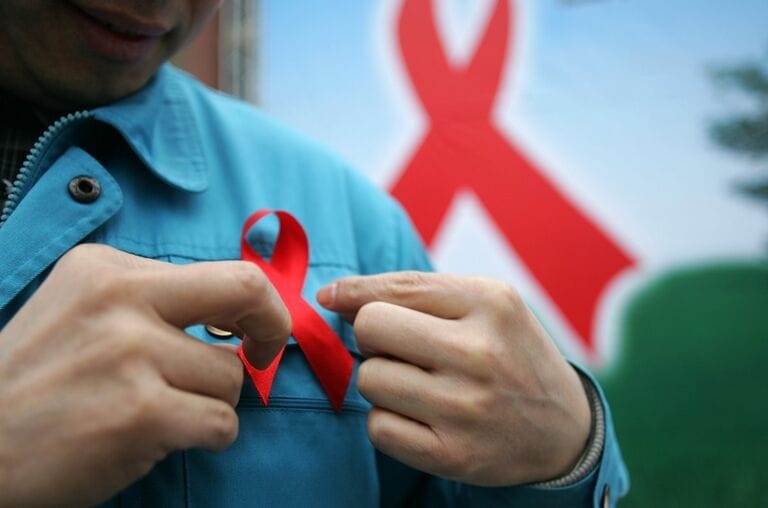
Source: Getty Images
Even though it’s nearly 30 years old, it still has a powerful resonance to this day. This simple design has been instrumental in raising awareness about HIV/AIDS. Red was chosen because it was an easy color to find.
Green Ribbons
As we’ve seen from the examples above, fashion can be a powerful way to show support for social issues (women’s voting rights) and empathy for marginalized people (African Americans and LGBTQs).
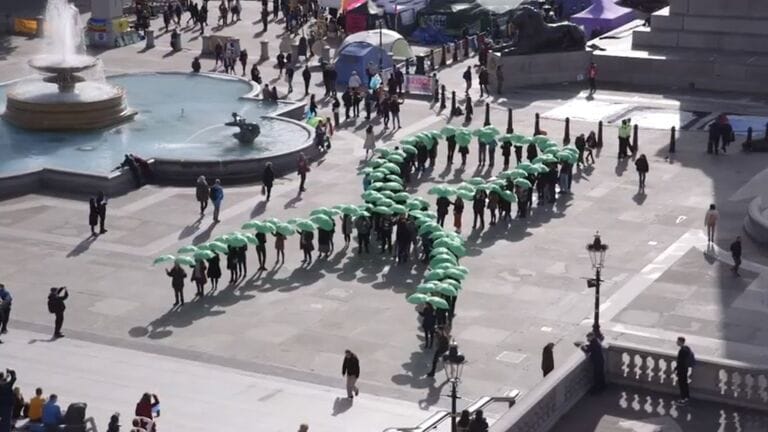
Source: Youtube
The red ribbon has been essential in spreading HIV/AIDS awareness, the pink ribbon for breast cancer awareness, and the brown ribbon for the struggle of Latinos in the entertainment industry. Alongside those three is the green ribbon, which has stood for many different causes over the course of its life.
Origins of the Green Ribbon
The green ribbon has been around for a lot longer than many of the other ones on this list – think centuries instead of years or decades. Over that long history, it has taken on a variety of meanings (which we will explore later).
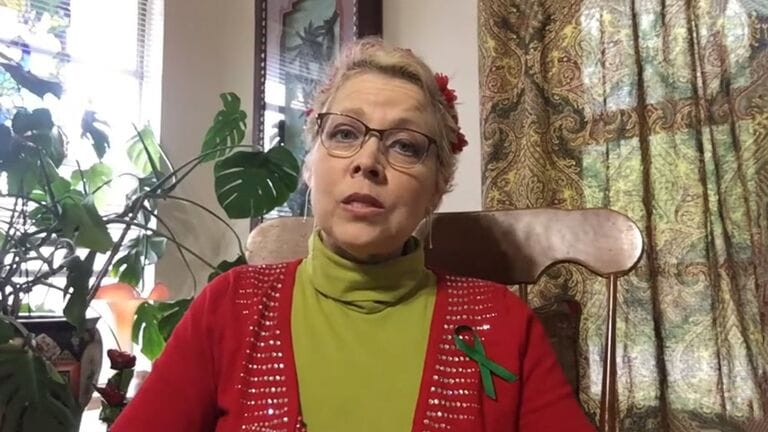
Source: Youtube
The original meaning, however, can be traced back to England in the 17th century. The country was enduring a Civil War fought over issues of governance and religious freedom. One group of fighters wanted to give power back to the people. That group wore green.
The Levellers
The Levellers wanted big changes to the way England was run at the time. They advocated for letting the people govern rather than the monarchy, and they wanted greater religious freedoms. Many who supported them wore green ribbons and carried around rosemary sprigs.

Source: Pixabay
These two symbols became important to the movement as a whole. It became a way to notify other members who shared the same ideals. When one of the most important leaders of the Levellers died, those at the funeral filled his grave with green ribbons and rosemary sprigs.
Kidney Cancer Awareness
Although the green ribbon as a symbolic item has been around since at least the 17th century, it hasn’t always retained the same meaning. In fact, the meaning has changed significantly since then – and continues to do so.

Source: Getty Images
One of the first changes centered around the kidneys. In particular, medical issues with the kidneys like kidney cancer and other kidney diseases. When March comes around, many people in the UK wear green ribbons to raise awareness of the issue.
For the Farmers
Alongside politics and medical issues, the green ribbon has also been useful in showing support for rural communities and farming families. The idea traces back to a Catholic Church in North Dakota during the late 1990s.
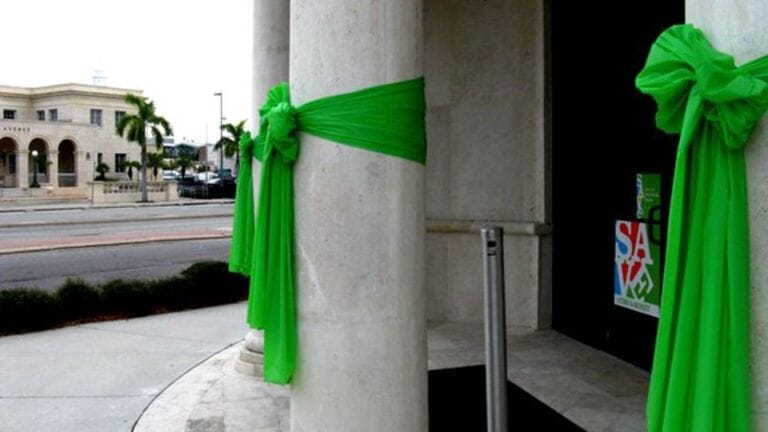
Source: Flickr
Church members dispersed cards with the message “We care through prayer.” Soon it caught on and spread to other churches. When The National Catholic Rural Life Conference convened later that year, they decided to use the green ribbon and promote it in other religious centers as well.
Solidarity with Muslims
Other social issues have also been represented through the green ribbon. In July 2005, a few Islamist extremists detonated bombs in a London train and a double-decker bus. It resulted in dozens of deaths, and soon after, anti-Muslim hate grew.
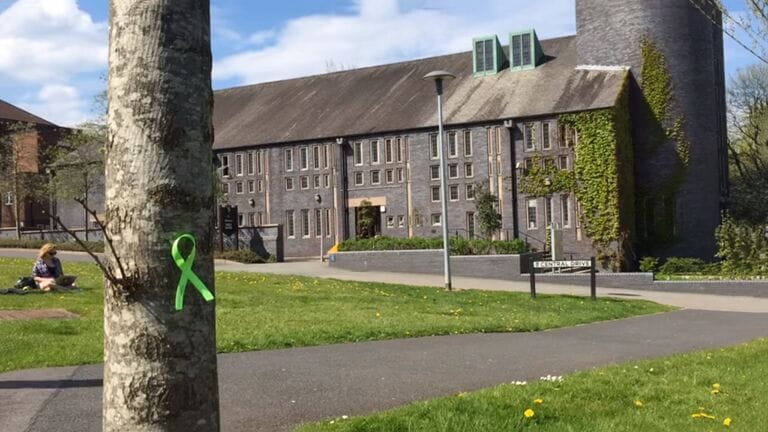
Source: Youtube
At the same time, many people were aware that plenty of their Muslim neighbors would be unfairly targeted because of their religion. So, local community members started wearing green ribbons to show solidarity with their Muslim neighbors and quell the spread of hate.
HIV Awareness
As you can see from the examples above, the green ribbon has undergone a significant change in meaning over the years. A few years after they were used to show solidarity with Muslim neighbors, the ribbons took on a whole other meaning. They started to be associated with the importance of taking HIV tests.
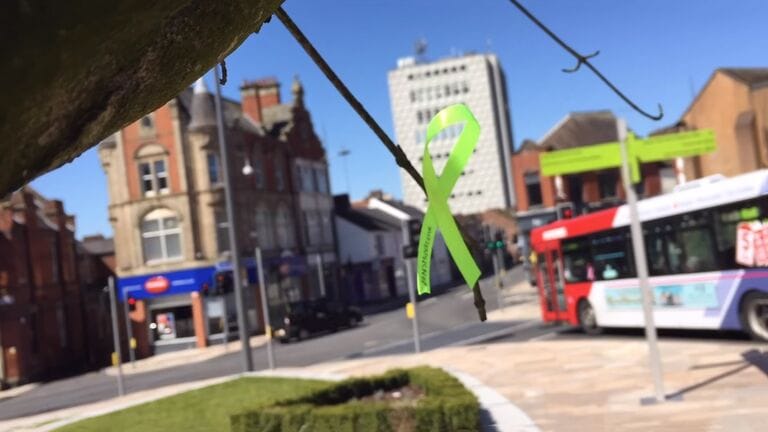
Source: Youtube
The Body Positive North West wanted to spread the word that quick HIV tests were available, so they used the green ribbon. At the time, over 30% of the UK population had HIV and didn’t know it.
Depression Awareness Month
More recently, the green ribbon has been used as a way to spread awareness about mental health issues. In particular, if you see people with green ribbons on their shirts in October, they’re probably participating in Depression Awareness Month.
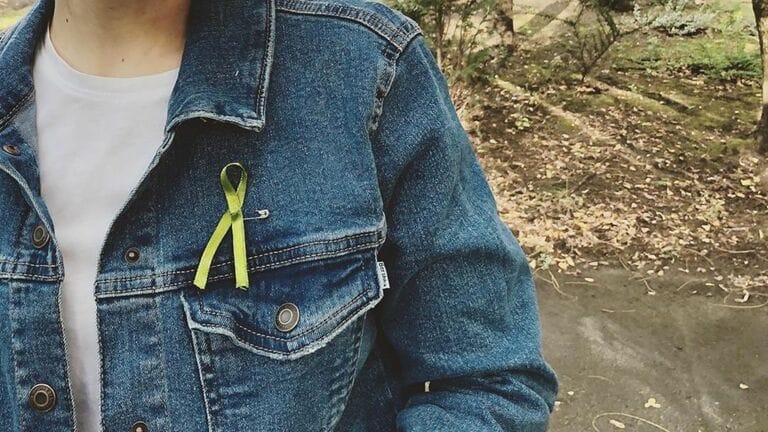
Source: hodgkin_is_a_loser/Instagram
Although it extends for the entire month, the 10th of October is an important day to mark off on the calendar because it’s recognized as World Mental Health Day. This day is gaining importance. The World Federation for Mental Health organizes it, and the World Health Organization observes it.
World Mental Health Day
The World Federation for Mental Health (WFMH) organized the first World Mental Health Day back in the early 1990s. They decided on October 10th. Their goal was to educate the (mostly American) public about the significance of mental health issues.

Source: Youtube
Their initial broadcasts on this issue came from a Florida studio and were primarily meant for an American audience. However, as the program went out, the WFMH found that the program was being heard and enjoyed by people outside the USA.
The News Spreads
People outside the US were listening to that early 1990s Florida broadcast. Soon the World Federation for Mental Health was answering calls from people all over the world – from Zambia, the United Kingdom, Chile, Australia, and more. The message was heard loud and clear.
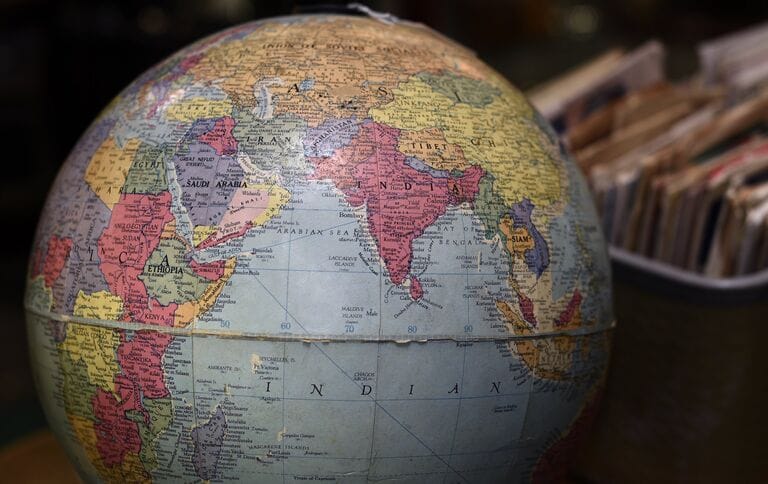
Source: Getty Images
The audience response was astounding, and it really floored the WFMH members. According to their website, “We realized that we were indeed reaching far afield, because there was an unanticipated and unscheduled telephone call-in from Swaziland.”
Today’s World Mental Health Day
From that humble beginning in the early 1990s, the message only grew. Nowadays, October 10th is well established as World Mental Health Day. People meet up on that day to spread awareness, share information, and advocate for specific causes and projects.

Source: Youtube
Each year, the organizers try to center awareness on a particular topic or theme. For example, the 1994 theme was “Improving the Quality of Mental Health Services throughout the World.” The 2021 theme was “Mental Health in an unequal world.”
Safety Pin Beginnings
Colored ribbons, rainbow flags, black leather jackets, and jeans have all played a role in social and political change. Safety pins have as well. Their story begins in 1849 when mechanic Walter Hunt invented them to pay off a $15 debt.
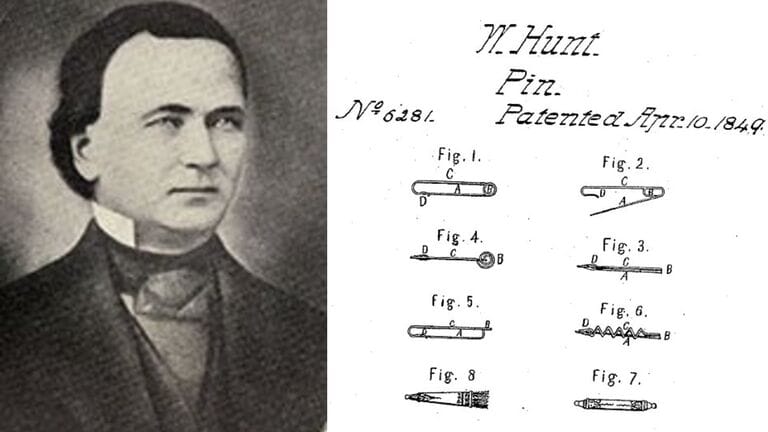
Source: Wikimedia Commons
The unique clasp and spring design was meant to avoid fingers from getting poked – hence the name “safety pin.” After Hunt perfected the design, he sold the patent for $400, paid back the $15 debt, and pocketed the rest.
Safety Pins’ Original Purpose
The safety pin was primarily designed to join bits of fabric together in a safe way. As its popularity spread, it became used in childcare (keeping baby diapers together), clothing (keeping ripped shirts and pants together), and medicine (keeping bandages together).
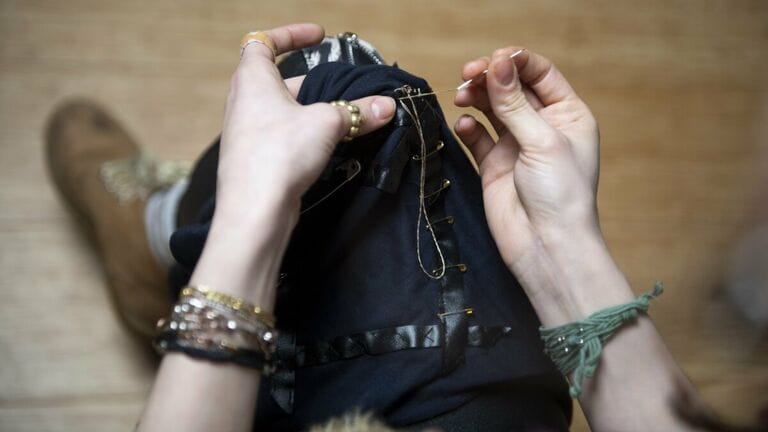
Source: Getty Images
That being said, the use and significance of the safety pin grew far beyond this. Eventually, it became a potent cultural symbol that took on meanings far beyond that of practical use. Although Hunt was inventive, he could have never thought of punk rock.
Punk Safety Pins
It might be hard to believe but this everyday item invented to settle a $15 debt eventually took on a variety of non-practical meanings. According to the beliefs of some countries, safety pins are meant to provide protection against supernatural forces that seek to harm us.
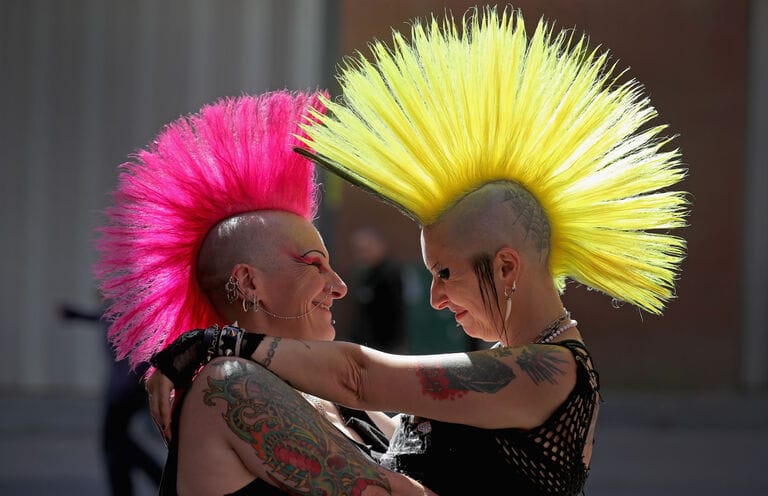
Source: Getty Images
Alongside this, one of the more iconic uses of safety pins came with the punk rock scene that emerged in the United States, United Kingdom, and Australia in the mid-1970s. Fans and musicians wore safety pins all over their jackets as a fashion statement.
Modern Meanings for the Safety Pin
In popular American culture, the safety pin has mostly been associated with the punk rock movement of the 1970s. As that movement grew popular, it eventually fizzled out into other genres in the 1980s and 1990s.
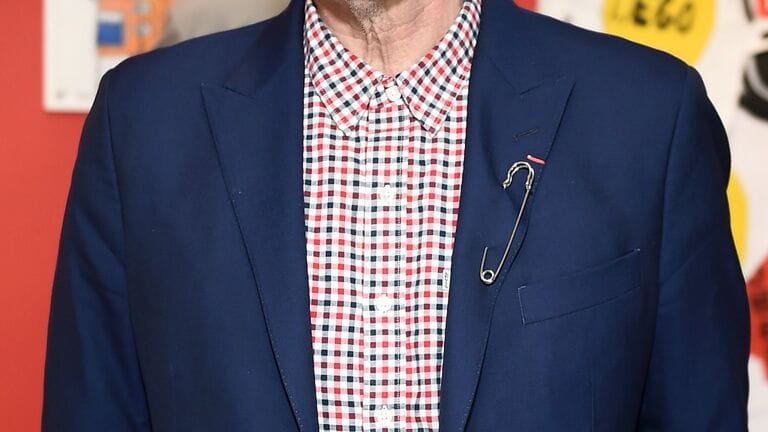
Source: Getty Images
Likewise, the meaning of the safety pin shifted from the anti-establishment ethos of punk rock to something else. That being said, the new meaning (which we will look at below) is also against the status quo, especially in terms of social and political issues.
New Meanings for Safety Pins
Symbols of support can range from the difficult-to-make (the original eight-colored LGBTQ flag) to the easy-to-find (the red ribbon for HIV/AIDS awareness). Some fashion choices can be even easier than that. For example, take a look at the safety pin.
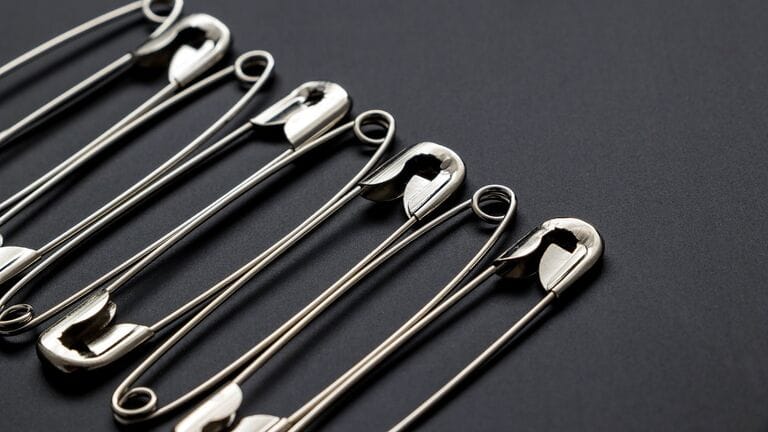
Source: Pixabay
The humble safety pin, easy to find and easy to use, has recently gained in popularity. Its use as a symbol relates to the fact that it’s so easy to find, easy to attach to any piece of clothing, and inexpensive to purchase.
The Safety Pin in Other Countries
As we saw from the examples above, the meaning of the safety pin has grown a lot since its humble beginning as a way to settle a $15 debt. In American popular culture, it’s mostly associated with punk rock. In other countries, however, it has different meanings.

Source: Getty Images
For example, pregnant women in Mexico have been known to wear a pin near their stomachs to ward off any sickness. Similarly, Ukrainian parents affix safety pins to their kids’ clothes to ward off negative supernatural forces.
Punk Rock Fashion
In the 1970s, punk rock took off in the US, UK, and Australia. The movement was centered around a DIY ethos. This meant DIY music (stripped down chord progressions) and DIY fashion (safety pins and mohawks).
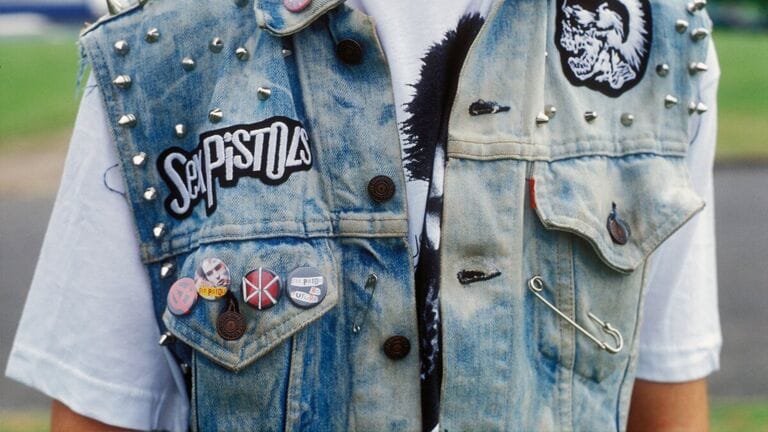
Source: Getty Images
Alongside being easy to find and affordable, safety pins allowed a great deal of creativity. Punk fans and musicians could attach them directly onto their leather jackets, or use them to attach badges that showcased their favorite bands. In this way, their clothes became easily customizable.
Origins of Modern Safety Pin Movement
In recent years, however, the safety pin has become a symbol of something far different than punk rock fashion. The modern safety pin movement is about showing solidarity with people who deal with emotional and/or physical abuse.
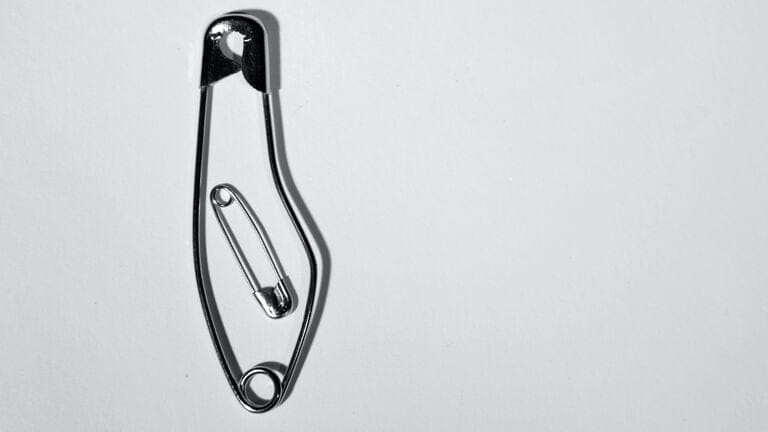
Source: Unsplash
It’s a difficult subject to talk about openly. Many people who suffer from these forms of abuse don’t want to talk about them, but they also don’t want to pretend like they aren’t there. The safety pin symbol can be worn by allies to show support for those undergoing abuse.
Where to Place the Safety Pin
As stated above, a major motivation for the modern safety pin movement is to show support and solidarity for those who’re vulnerable – in particular those made vulnerable by physical and emotional abuse.
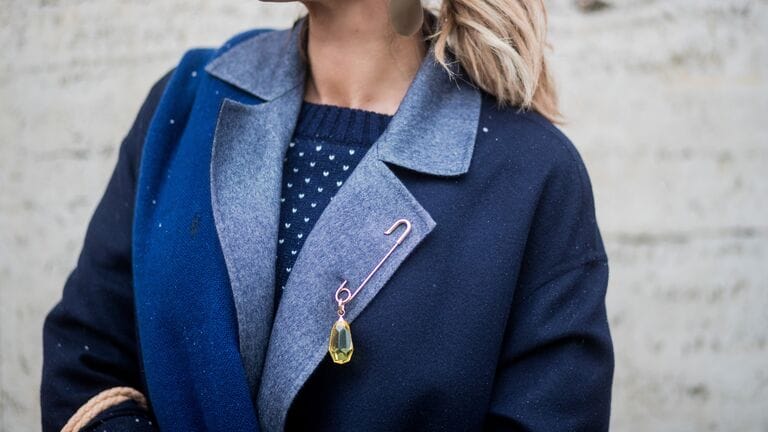
Source: Christian Vierig/Getty Images
The safety pin itself doesn’t have to be in any particular spot. Some prefer it on the upper body, others on the lower body. Pins have been placed on hats, collars, shirts, belts, pants, dresses, and more. The important part is showing that you are willing to support those who might need it.
Marginalized People
The modern safety pin movement seeks to show support to a wide variety of marginalized people – people who aren’t accepted by the mainstream. Many still need to fight against discrimination in their personal and professional lives.
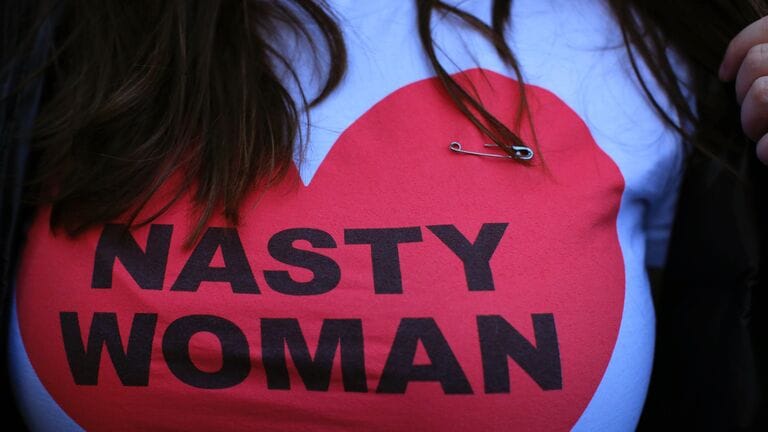
Source: Kena Betancur/Getty Images
This wide group of marginalized people includes people of color, those in the LGBTQ community, women of all kinds, and people with disabilities. People who wear safety pins are showing the fact that they are allies who hope to create a “safe” space.
Allies with Safety Pins
The wearing of a safety pin is a subtle way to show that you are an ally seeking to empathize and provide support for a variety of marginalized people. Some of the people who wear the pins are marginalized themselves, though not everyone.

Source: Andrew Lichtenstein/Getty Images
When people are marginalized by society, it can make life very difficult on a day-to-day basis because they’re often dealing with sexism, racism, ableism, homophobia, and more. Although it doesn’t fix the problem, allies wearing safety pins can signal that they’re there for support.
Origins of the Modern Safety Pin Movement
Graphic designer Kaye Kagaoan explained the significance of this new safety pin movement to The New York Times in a 2016 interview. “It’s a matter of showing people who get it that I will always be a resource and an ally to anyone and everyone who wants to reach out.”

Source: Matheisl/Getty Images
She continued, “When I saw it on Facebook, it was so simple. It resonated with me.” Kagaoan’s feelings resonate with plenty of other people as well, from regular folks to influential celebrities.
Patrick Stewart’s Support
Around the same time as Kagaoan’s interview in The New York Times, other celebrities began to take notice and participate. For example, the British actor Patrick Stewart – famous for Star Trek and X-Men – fastened a safety pin to his jacket lapel and snapped a photo.

Source: Carlos Alvarez/Getty Images
Stewart posted the photo on Twitter, and it quickly gained an audience. Alongside all the positive comments left below were more than 9,500 retweets and 25,700 likes. That number continues to grow.
Where Did the Safety Pin Movement Come From?
We can see from its coverage in The New York Times and Patrick Stewart’s tweet that the safety pin movement has grown rapidly, but where did it come from? One word: Australia.

Source: Roberto Robres/EyeEm/Getty Images
After a hostage crisis at a Sydney cafe in 2014, there was a growing anti-Muslim sentiment. However, many Australians didn’t want that to happen, so they created the #illridewithyou to express their solidarity with Muslims in Australia. That hashtag eventually grew into the wearing of safety pins in public.
Confusion over the Safety Pins’ Meaning
Not everyone knew what the meaning behind the safety pin was. People were either unfamiliar with the Sydney cafe siege or the anti-Muslim response that arose from it, so they thought the safety pin had a variety of other meanings.

Source: Twitter
For example, some people saw it as a way to show their opposition to right-wing politics. Some international students, like Sabrina Krebs from Guatemala, saw it as something simpler. Krebs told The New York Times, “More than anything, it’s pro-kindness… It’s a form of resistance to hate and to negativity.”
Accessible to Everyone
The brilliance of the safety pin, according to Sabrina Krebs and others, was how simple and accessible it was. They were easy to find at local stores and they wouldn’t break the bank.

Source: Flickr
That’s why this simple symbol has grown to take on so much meaning. Even people who aren’t prone to expressing themselves through fashion can get on board with a little safety pin. They can display it in any way they feel to show solidarity with these larger issues.
Many Others Agree
The ease of access to safety pins was a major factor in their appeal for Sabrina Krebs. She wasn’t the only one. Lots of people are concerned about social and political issues in the world, but they don’t have much time in between work and family to do much about it.
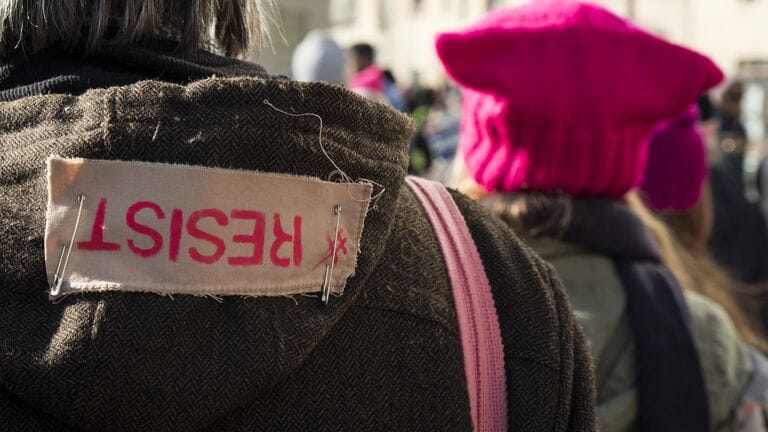
Source: Ira L. Black/Corbis/Getty Images
Wearing the safety pin allowed ordinary people to show that they cared about larger social and political issues without having to spend hours at a protest or years working on legislation.
The Slacktivism Criticism
Although for people like Robert Clarke and Sabrina Krebs, the simplicity of the safety pin was a major benefit – for others, it was a setback. The fact that it was so easy to find and wear a pin led some to question the value of this kind of action.
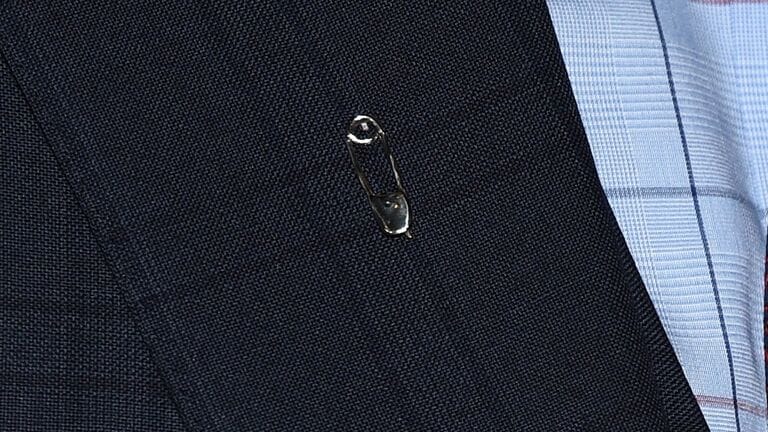
Source: Amanda Edwards/WireImage/Getty Images
On Twitter, it was lambasted as another example of “slacktivism.” This mix of the words “slacker” and “activism” is meant to be negative. It’s meant to be about people who want to look like they’re doing something without actually doing anything.
Against the Safety Pin Movement
The Twitter users calling it “slacktivism” weren’t the only ones criticizing the new safety pin movement. The author Christopher Keelty wrote a piece that was picked up by HuffPost in 2016. In it, he described his feelings toward safety pins. “They’ll do little or nothing to reassure the marginalized populations they are allegedly there to reassure,” he said.

Source: RawPixel
Keelty argued that the safety pin movement wasn’t about showing solidarity with marginalized groups, it was about making non-marginalized people feel better about themselves.
Keelty’s Criticism of the Safety Pin Movement
In the same HuffPost piece, Keelty wrote, “Marginalized people know full well the long history of white people calling themselves allies while doing nothing to help – or even inflicting harm on – non-white Americans.” It’s a harsh and bitter pill to swallow.

Source: Edward Berthelot/Getty Images
Keelty went on to express how skeptical he was about the effectiveness of this sort of fashion activism. “We don’t get to make ourselves feel better by putting on safety pins and self-designating ourselves as allies,” he wrote.
Twitter Strikes Back
To be fair to Twitter users, they did more than simply label the entire movement as a form of slacktivism. That was a big part of their criticism, but they also offered up a more positive criticism.
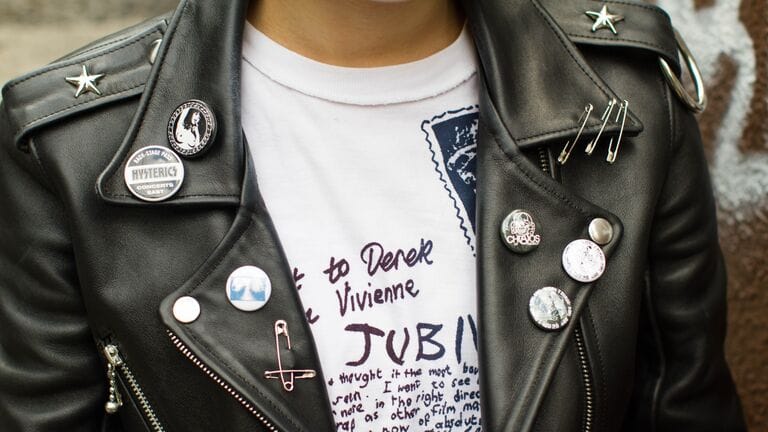
Source: Onnie A Koski/Getty Images
For example, one person tweeted, “By all means, wear a safety pin if you think it’s somehow helping someone. But do not make it the only thing you do to be an ally.” This tweet recognizes ally feelings but also points out that a lot more needs to be done than simply showing solidarity.
Donate Time and Money
Other Twitter users back up the sentiment expressed above – they say something beyond a simple show of solidarity is needed. For example, one Twitter user expressed how inadequate the simple act of wearing a safety pin is. It needs to be paired with constructive action that has real tangible benefits.

Source: Claudio Lavenia/Getty Images
This person suggested that people in the safety pin community, “Donate time. Donate money. Support people in your community with action. If you still wear the pin, be sure to be ready to back it up.”
Safety Pin Supporters
Despite all the backlash from Twitter users and authors like Christopher Keelty, the safety pin movement has also had some supporters who are more optimistic about the project.

Source: Pixabay
For example, in a 2016 Medium post, author Anoosh Jorjorian wrote, “I’ve heard from plenty of POCs [people of color] and Muslims as well as some LGBTQIAs that they feel surrounded by enemies. The safety pin helps them feel that they are not isolated and alone.” So for some, it has worked.
Bringing People Together
Anoosh Jorjorian says that the safety pin movement has been beneficial to some people of color, Muslims, and LGBTQIAs. This sentiment highlights the successes of this movement so far.
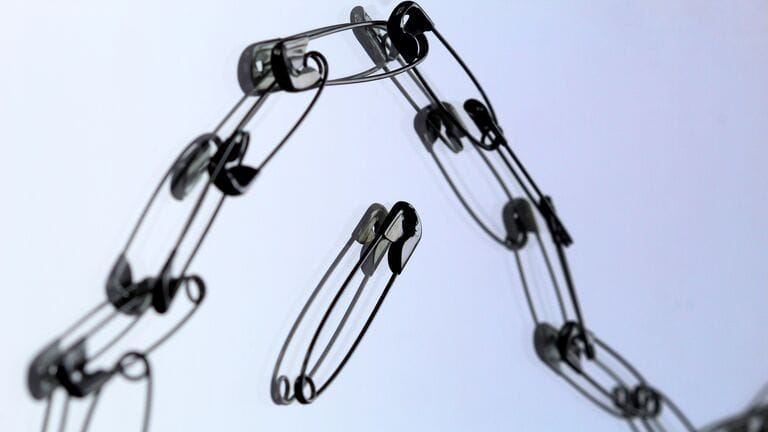
Source: Tumblr
Jorjorian’s support for the safety pin movement was echoed by the journalist Michelle Goldberg. In a 2016 article for Slate magazine, she wrote, “We need an outward sign of sympathy – a way for the majority of us who voted against fascism to recognize one another.” The safety pin can do this.
A Constant Reminder
Robert Clarke, a truck driver who was interviewed alongside others for an article in The New York Times, held similar ideas to those of Jorjorian and Golberg. Alongside being a display of solidarity, Clarke also felt that the safety pin was a constant reminder.
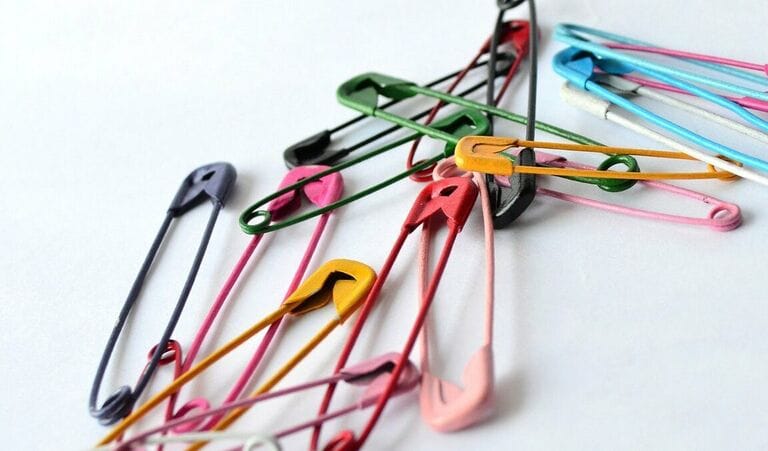
Source: Pixabay
A reminder to show up when he’s needed. “A big part of wearing it is the mental preparation on my part. If I do see something, I’ve thought it through, and I’ll stand up and say something and not be a silent witness,” he said.
